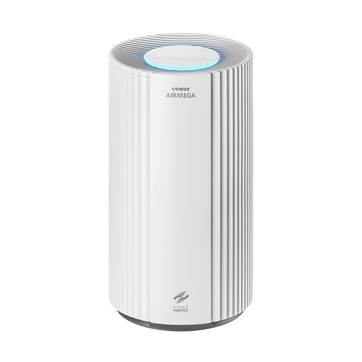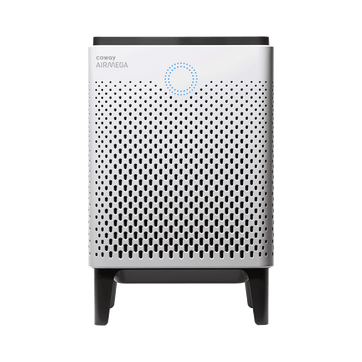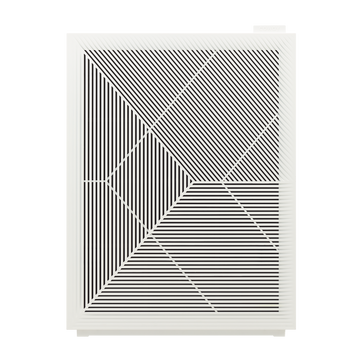
The health hazards of new and renovated homes
If you’re planning a home renovation or moving to a newly built abode, you’re not alone. An estimated 608,000 new homes were sold in 2017, an 8.3 percent increase from 2016, according to the US Census Bureau and the Department of Housing and Urban Development.
But, while enjoying a remodeled kitchen or settling into a spanking-new house is exciting, it also can contribute to heath issues ranging from headaches to liver damage, in extreme cases. That’s because some materials used in construction can emit unhealthy or potentially toxic volatile organic compounds, or VOCs, which are chemicals used in everything from paint and varnishes to flooring.
Specifically, VOCs are most commonly found in these places:
Paint
It’s likely any home renovation or new home construction will feature a lot of fresh paint just about everywhere. But even after that distinctive smell has worn off, new paint can cause VOCs to shed from the walls through a process known as off-gassing. Over time, you and your family can develop a host of unpleasant reactions, such as headaches, nausea and hives.
Carpeting
You may love the sensation of plush new carpeting under your feet, but you might feel differently when you realize what goes into it. First, 4-phenylcyclohexene (4-PCH), a chemical used in the carpet backing, can emit harmful VOCs. Plus, your new carpeting can contain formaldehyde, which also has been classified as a carcinogen and can cause irritation of the skin, eyes, nose and throat.
Flooring and pressed wood
With flooring, adhesives used in installation can introduce both VOCs and semi-volatile organic compounds (SVOCs) into the air. Some caulks and sealants used to protect flooring can also contain VOCs. Engineered wood, like plywood and particleboard, used as a subfloor and throughout a home can also emit formaldehyde over time.
What can you do to make sure your new or renovated home isn’t harmful to your health? One move is to buy paint and carpeting with reduced VOCs. The EPA offers additional tips here. Finally, a smart air purifier with a HEPA filter can help reduce the amount of unhealthy particulate matter, including VOCs, that have been released into your home.
Disclaimers
1Coway air purifiers has been proven to trap dust, pollen, dander, viruses and bacteria in the air based on KCL (Korea Conformity Laboratories) testing.They have been tested in a 30㎥ size chamber according to the Korea Air Cleaning Association standard (SPS-KACA 002-132:2022 Modified) to measure the 0.01㎛ size of particle removal rate. It was tested on maximum airflow speed in normal room temperature and humidity conditions. The performance may vary in the actual living environment of customers.
→ Tested with Airmega Aim, 150, 160, AP-1216L, AP-1512HH, AP-1512HHS, 200M, Icon, IconS, 230, 240, 250, 250 Art, 250S, 300, 300S, 400, 400S, ProX
299.97% of viruses, bacteria, fungi and pollen were verified to be removed from the air for Coway air purifiers which have Green True HEPA™ filter applied based on the Japan Food Research Laboratories(JFRL) testing according to JEM 1467 standard.
→ Tested with Coway Airmega AP-1512HH, AP-1512HHS, 250, 250 Art, 250S, 300, 300S, 400, 400S
→ All tested by JFRL and received above result within below time.
All tested by JFRL and received above result within below time.
- Virus: Tested with Escherichia coli phage ΦX174 NBRC 103405, 60 minutes
- Bacteria: Tested with Staphylococcus epidermidis NBRC 12993, 60 minutes
- Fungi/Mold: Tested with Penicillium citrinum NBRC 6352, 60 minutes
- Pollen: Tested with Cedar Pollen extract, 60 minutes
3Aerosol test conducted in a Biosafety level 3 laboratory with two Coway air purifier models, Coway Airmega 250 and 400 for removal of SARS-CoV-2 Aerosol by US based MRI Global, a not-for-profit laboratory and partner of US Department of Defense. The test was conducted in a 13.1ft3 chamber. Virus was aerosolized for 15 minutes and the product was turned on high for 2 minutes. Result showed each product effectively removed over 99.98% of the SARS-CoV-2 in 2 minutes. This is a result from a laboratory experiment condition and result may vary in different conditions. This result does not imply it kills SARS-CoV-2 or prevents the transmission of Covid-19. Coway Airmega 250S and 400S are identical to the tested models and has equal performance with an additional mobile connectivity function.
4The concentration of ammonia, acetaldehyde and acetic acid were proven to be removed within 30 minutes by FCG Research Institute, Inc. Human Life Science Lab. It is not a demonstration result in the actual use space. Not all odors and gases may be supported. → Tested with Coway Airmega 150, 160, AP-1512HH, AP-1512HHS, 400, 400S
5The coverage area of the air purifier is based on an area where the air cleaner can make two air changes per hour (ACPH). An air change per hour translates to how many times an air purifier can clean an area, assuming the height of a ceiling to be 8 ft, in one hour. Therefore ** means two air changes per hour means that the cleaner can clean the area once every 30 minutes and * means air changes per hour means that the air purifier can clean the area once every 60 minutes.
10Terms and conditions apply. Discounts, including promotions, coupons, bundle discount and subscription discount, cannot be stacked on top of other coupons. During promotional periods, discount codes will not be able to be applied to orders. Promo codes may apply to products only—filters, accessories, and new products within 3 months of the release date are not included.




















